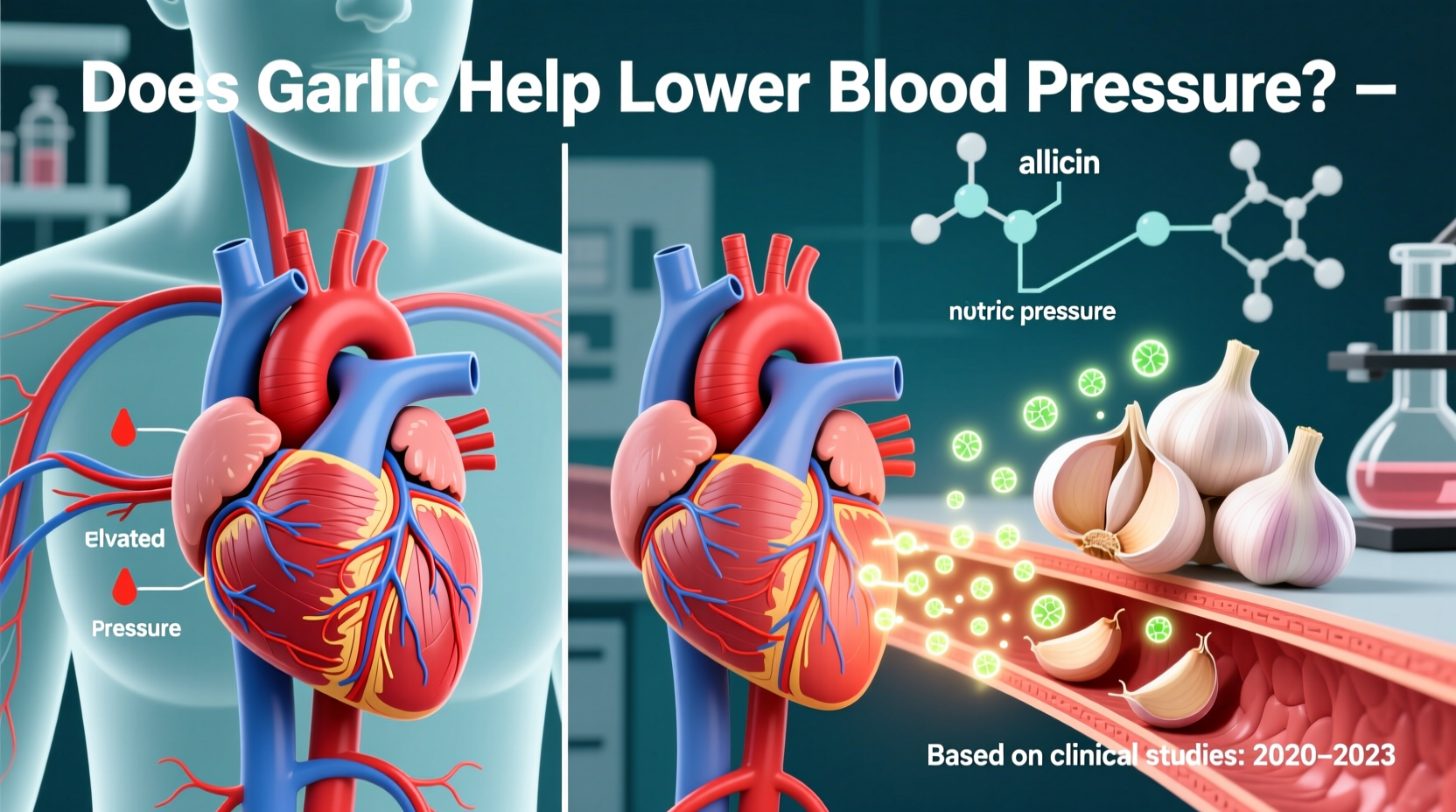When you're exploring natural approaches to manage blood pressure, understanding what actually works matters. Garlic isn't a magic bullet, but research reveals it can be a meaningful addition to your cardiovascular health strategy. Let's examine exactly how garlic affects blood pressure, what the science really says, and how to use it effectively.
The Active Compounds Behind Garlic's Blood Pressure Benefits
Garlic's cardiovascular benefits primarily come from allicin, formed when raw garlic is crushed or chopped. This unstable compound quickly transforms into other sulfur-containing substances like diallyl disulfide and S-allyl cysteine that provide longer-lasting effects. These compounds work through several mechanisms:
- Stimulating nitric oxide production, which relaxes blood vessels
- Reducing oxidative stress that damages blood vessels
- Exhibiting mild calcium channel blocking effects
- Decreasing arterial stiffness over time
"Unlike many herbal supplements, garlic has substantial clinical evidence supporting its blood pressure effects," explains Dr. Matthew Budoff, Professor of Medicine at UCLA's David Geffen School of Medicine. "The key is using the right form and dosage consistently."

What Clinical Research Actually Shows
Multiple systematic reviews and meta-analyses have examined garlic's impact on blood pressure. The most comprehensive analysis comes from a 2020 review published in Experimental and Therapeutic Medicine that evaluated 12 randomized controlled trials involving 845 participants.
| Garlic Form | Average Systolic Reduction | Average Diastolic Reduction | Effective Dosage | Time to Effect |
|---|---|---|---|---|
| Aged garlic extract | 7.1 mmHg | 4.8 mmHg | 600-1,200 mg daily | 8-12 weeks |
| Garlic powder tablets | 5.2 mmHg | 3.3 mmHg | 600-900 mg daily | 12-16 weeks |
| Raw garlic consumption | 8.4 mmHg | 7.3 mmHg | 1-2 cloves daily | 16-24 weeks |
This data comes from the National Center for Complementary and Integrative Health's analysis of clinical trials (nccih.nih.gov/health/garlic). The reductions are modest but clinically significant—comparable to some first-line hypertension medications at their lowest doses.
How Garlic Compares to Conventional Blood Pressure Treatments
While garlic shows promise, it's crucial to understand its place in hypertension management. The American Heart Association emphasizes that lifestyle modifications form the foundation of blood pressure control, with medication added when necessary.
| Approach | Average Systolic Reduction | When Recommended | Important Considerations |
|---|---|---|---|
| Garlic supplementation | 5-10 mmHg | Prehypertension or stage 1 hypertension | Works gradually; requires consistent use for months |
| DASH diet | 8-14 mmHg | All hypertension stages | Most effective when combined with other lifestyle changes |
| ACE inhibitors | 10-15 mmHg | Stage 1 hypertension and above | Requires prescription; potential side effects |
Practical Guidance: Using Garlic Effectively for Blood Pressure
Not all garlic preparations deliver the same benefits. Research shows significant differences in effectiveness based on preparation method:
Choosing the Right Form
- Raw garlic: Most potent but requires proper preparation—crush and let sit for 10 minutes before consuming to activate allicin
- Aged garlic extract: Most studied form in clinical trials; standardized for S-allyl cysteine content
- Gelatin-coated tablets: Protect allicin from stomach acid; look for enteric-coated options
- Avoid: Pickled garlic, garlic powder in cooking, and most "odorless" supplements which lack active compounds
Dosage Recommendations Based on Research
Clinical trials showing blood pressure benefits typically used:
- 600-1,200 mg of aged garlic extract daily (standardized to 1.2-2.4 mg S-allyl cysteine)
- Equivalent to 1-2 fresh garlic cloves consumed properly (crushed and allowed to sit)
- Effects typically become measurable after 8-12 weeks of consistent use
Important Limitations and Safety Considerations
Garlic's blood pressure benefits come with important caveats that many supplement marketers overlook:
When Garlic Isn't Sufficient
Research consistently shows garlic works best for mild hypertension (systolic 130-149 mmHg). The American Heart Association states that for stage 2 hypertension (systolic ≥160 mmHg), medication should be the primary treatment approach with lifestyle modifications as complementary support.
Medication Interactions to Consider
Garlic can interact with several common medications:
- Increases bleeding risk when taken with blood thinners like warfarin
- May enhance effects of HIV protease inhibitors
- Potentially reduces effectiveness of some birth control pills
Always discuss garlic supplementation with your healthcare provider if you take prescription medications.
Integrating Garlic Into Your Blood Pressure Management Plan
For best results, combine garlic with other evidence-based approaches:
- Start with measurement: Establish your baseline blood pressure with home monitoring
- Choose standardized supplements: Look for aged garlic extract with verified S-allyl cysteine content
- Combine with dietary changes: Follow the DASH diet principles for maximum effect
- Track consistently: Measure blood pressure twice weekly at the same time of day
- Reevaluate after 12 weeks: Consult your doctor about whether additional treatment is needed
Remember that garlic works gradually—don't expect immediate results. The Mayo Clinic notes that "it may take 2-3 months of consistent use before you see measurable changes in blood pressure" (mayoclinic.org/drugs-supplements-garlic).
When to Consult Your Healthcare Provider
While garlic is generally safe, certain situations require professional medical guidance:
- If your systolic blood pressure remains above 140 mmHg after 12 weeks of consistent garlic use
- Before starting garlic if you have bleeding disorders or upcoming surgery
- If you experience digestive upset or allergic reactions
- When combining with blood pressure medications to avoid excessive lowering
"Natural doesn't always mean risk-free," cautions Dr. Erin Michos, Associate Director of Preventive Cardiology at Johns Hopkins Medicine. "The most effective approach combines evidence-based natural strategies with conventional medicine when needed."
Conclusion: Garlic's Realistic Role in Blood Pressure Management
Research confirms that properly prepared garlic can modestly lower blood pressure, particularly for those with mild hypertension. While not a replacement for medication in moderate to severe cases, it can be a valuable component of a comprehensive blood pressure management strategy when used correctly. The key is managing expectations—garlic provides incremental benefits that work best alongside other lifestyle modifications, not as a standalone solution.











 浙公网安备
33010002000092号
浙公网安备
33010002000092号 浙B2-20120091-4
浙B2-20120091-4